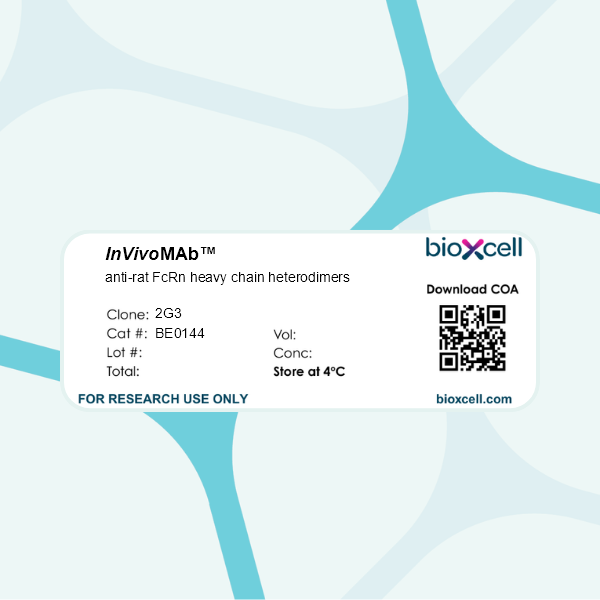InVivoMAb anti-rat FcRn heavy chain heterodimers
Product Description
Specifications
| Isotype | Mouse IgG1 |
|---|---|
| Recommended Isotype Control(s) | InVivoMAb mouse IgG1 isotype control, unknown specificity |
| Recommended Dilution Buffer | InVivoPure pH 7.0 Dilution Buffer |
| Conjugation | This product is unconjugated. Conjugation is available via our Antibody Conjugation Services. |
| Immunogen | Purified soluble FcRn |
| Reported Applications |
ELISA Flow cytometry |
| Formulation |
PBS, pH 7.0 Contains no stabilizers or preservatives |
| Endotoxin |
≤1EU/mg (≤0.001EU/μg) Determined by LAL assay |
| Purity |
≥95% Determined by SDS-PAGE |
| Sterility | 0.2 µm filtration |
| Production | Purified from cell culture supernatant in an animal-free facility |
| Purification | Protein G |
| RRID | AB_10950633 |
| Molecular Weight | 150 kDa |
| Storage | The antibody solution should be stored at the stock concentration at 4°C. Do not freeze. |
| Need a Custom Formulation? | See All Antibody Customization Options |
Application References
ELISA
ELISA
Western Blot
Raghavan, M., et al (1994). "Investigation of the interaction between the class I MHC-related Fc receptor and its immunoglobulin G ligand" Immunity 1(4): 303-315.
PubMed
The neonatal Fc receptor (FcRn) is structurally similar to class I major histocompatibility molecules. FcRn transports maternal immunoglobulin G (IgG) from ingested milk into the blood. IgG is bound at the pH of milk (pH 6.0-6.5) in the gut and released at the pH of blood (pH 7.5). We find that alteration of a histidine pair within the alpha 3 domain of FcRn and of a nearby loop (the FcRn counterpart of the class I CD8-binding loop) affects the affinity for IgG. Inhibition studies suggest the involvement of the FcRn B2-microglobulin domain in IgG binding. Fragment B of protein A inhibits FcRn binding to IgG, localizing the binding site on Fc for FcRn to the CH2-CH3 domain interface. Three histidines present at the CH2-CH3 domain interface of Fc could be partially responsible for the pH-dependent interaction between FcRn and IgG.

